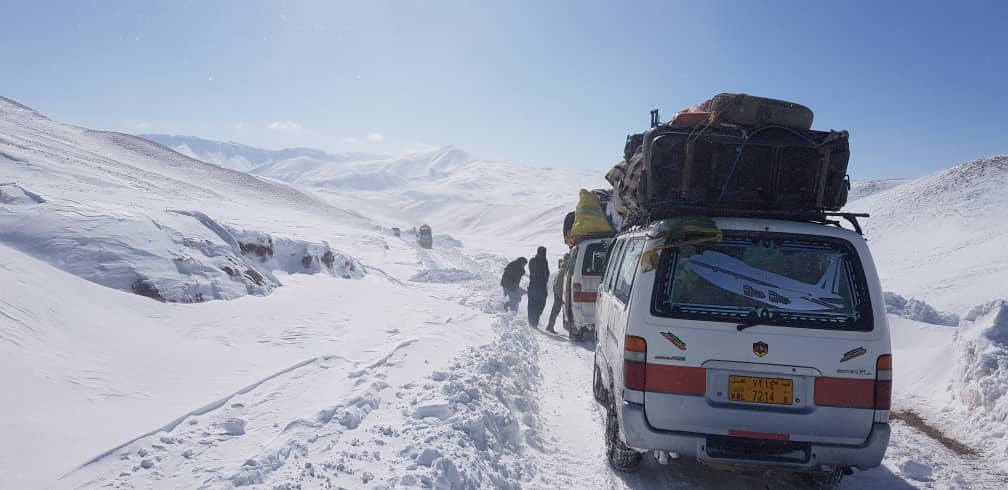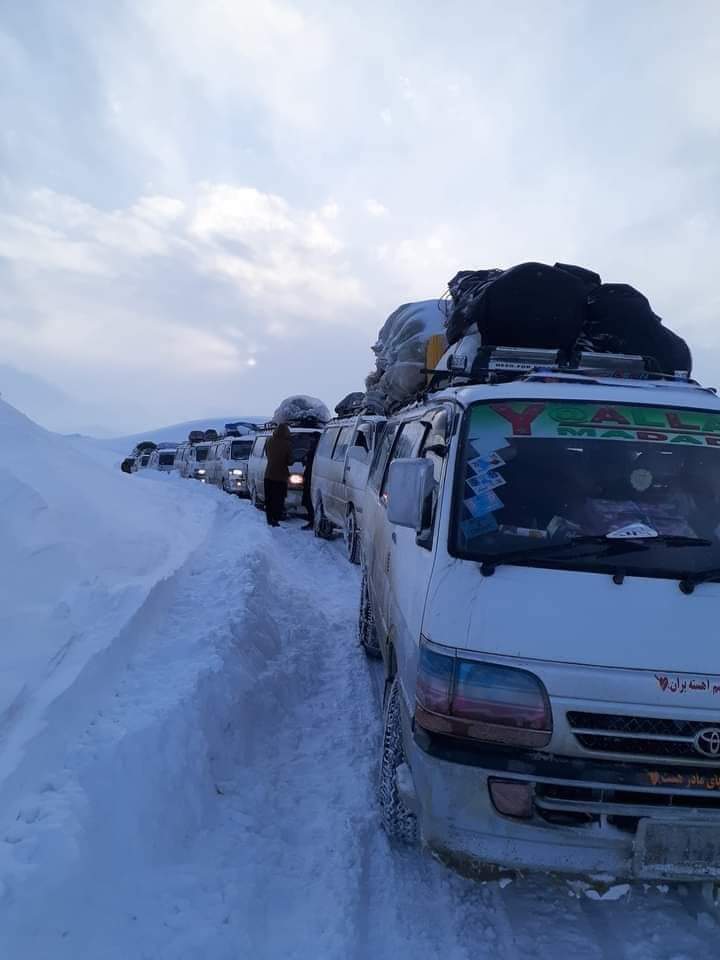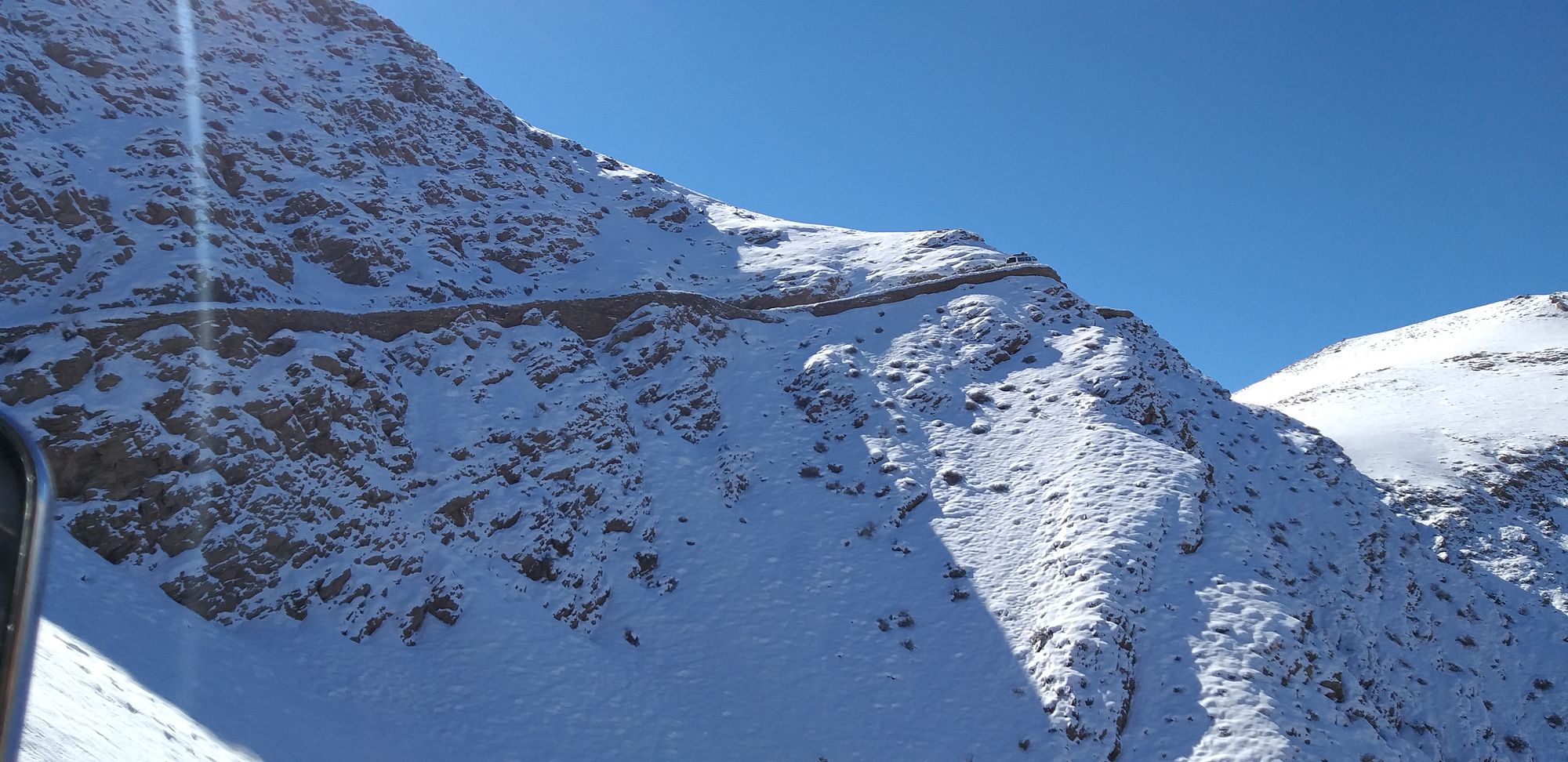Half of Afghanistan, Snowbound for Winter
Each year the winter brings heavy rain and snow, cutting off travel between many of Afghanistan's provinces and districts. During the winter, more than half of Afghanistan's provinces are blanketed in snow for weeks at a time.

Reporting by Sima Siawash and Abdul Karim Azim, written by Abdul Ahad Poya, and edited by Mohammad J. Alizada and Brian J. Conley
Despite billions of dollars spent in reconstruction efforts in Afghanistan over the past 20 years, most of the roads in the country are still not paved. Each year the winter brings heavy rain and snow, cutting off travel between many of Afghanistan's provinces and districts. During the winter, more than half of Afghanistan's provinces are blanketed in snow for weeks at a time.
Previous governments have primarily focused development on the capital and a number of major cities. Snow removal trucks, as well as rescue teams for people who are stuck in bad weather are virtually non-existent and no real effort has been made throughout the years to build a viable, maintainable connection between hard to reach villages, districts and provincial capitals.
Roads in villages and districts throughout several provinces are blocked by snow each year. Alive in Afghanistan spoke with residents of six of these provinces: Badakhshan in the northeast, Bamyan, Daikundi and Ghor in the center, Ghazni in the southeast and Nuristan in the east. Most of the districts in each of these provinces are cut off from the provincial capitals, neighboring districts, and provinces for much of the winter due to heavy snowfall.
Presented below are comments from Afghans living across the country to Alive in Afghanistan. In an effort to increase understanding of Afghanistan’s geography the comments are presented from east to west. The central spine of Afghanistan is mountainous, extending from the Wakhan corridor in Badakhshan east across Nuristan until it reaches the plateau of Bamiyan, as well as the mountainous parts of Ghazni, Daikundi, Ghor, and Badghis. These provinces and much of the central and northern portions of Afghanistan are extremely mountainous.
Badakhshan in northeastern Afghanistan is home to one of the most isolated regions in the country. The Wakhan corridor, which borders Tajikistan, China and Pakistan, has no roads whatsoever, making travel during winter impossible.
Shabnam Farzam, a resident of Kishm district of Badakhshan, told Alive in Afghanistan, “The residents of Pamir, Shighnan, Wakhan, Darwaz, and Gharan area of Ishkashim districts transport their sick family members on mules, camels and horses during the long winter months, which can take up to 8 days.”
This method of travel is still very dangerous and quite slow. Many Afghans needing treatment die on the way to the hospital each year.
Faizullah Darwazi, a resident of Darwaz district says, “During winter, some people are killed by avalanches while others who do not have the financial means to hitch a ride and get their sick relatives the care they need, lose them.”
The issue is not only during the winter, because of the distance between districts and the provincial capital and the condition of the roads, residents of the province face a lot of challenges even traveling to nearby areas during the summer as well as winter.
The residents of Shighnan, Darwaz and Pamir in particular face a lot of challenges during the winter months.
Bashir Ahmad Ahmadi, a resident of Nuristan, a province of steep mountains with very little flat land for construction, told Alive in Afghanistan, “Most families have built their homes on the mountain slopes, making every day tasks like access to water, and basic needs, difficult.”
Nuristan has many mountainous and impassable areas where roads are closed due to heavy snowfall during the winter. According to Bashir, the district of Kamdish has the most impassable routes.

Central Afghanistan faces no less challenges with winter travel. Many residents of the province of Bamiyan, in central Afghanistan, are snowbound with the onset of winter. Rahman Mobed, a resident of the province, said, "40 percent of Bamyan’s residents face many challenges during the winter season which lasts four to five months.”
The requirement to travel to provincial capital for a variety of necessary jobs puts a high burden on Afghan families during the winter in particular, and can be extremely dangerous.
"Two months ago a family lost one of their four disabled daughters on the way home from the provincial capital after they were stuck in heavy snow and their mules could no longer carry them.”
Ali Dad Roshan, a resident of Baimyan who is in charge of surveying health centers on behalf of the Ministry of Health, said, "Currently, a number of health centers do not have enough medicine for their patients and one of the reasons for the lack of medicine is road closures.”.
Although there are health centers in different parts of Bamiyan, intensive care and surgeries can only be performed at hospitals in the provincial capital.
“The issues include access to healthcare and food. Mothers lose their babies, die or both on the way to the clinic for childbirth, people carry their sick on their shoulders using wooden boards for 10 or 12 hours,” Mr. Mobed said.
Punjab, No. 1, No. 2, Yakawlang and Waras are among districts with the most impassable roads and are a nuisance to their residents in winter.
In the southeastern province of Ghazni the western districts of Nahur, Malistan, Ajristan and Jaghori, some of which borders Bamiyan, are also inaccessible during snow season. The road connecting Nahur to other districts goes through Shamsuddin valley, which is impassable during winter because of heavy snowfall.
According to Mr. Naimatullah Ahmadi, a resident of the province, “It takes a week to get to the provincial capital if someone is sick or if there is an urgent need. Many times the decision has to be made despite the high risk to those who are taking on the trip.”
Many people die in avalanches or being lost while it’s snowing.
In Daikundi, a central province southwest of Bamiyan, snow and high mountains block access to several districts for months during the winter. This province is mostly mountainous and for about six months of the year, its districts are either closed and/or semi-closed with Nili, the capital of the province. According to the residents of the province, they face many challenges during winter.
Alive in Afghanistan’s Sima Siawash, a resident of Daikundi who has spent most of her life there, shares her experience.
“During the winter months with heavy snow, people are left with no choice but to travel long distances passing through very high mountains at high risk to their lives by foot. It is more difficult for the residents of this province when they have an urgent illness and the road is blocked, they have to carry their patients to health centers on a wooden board above their shoulders, which takes hours," Ms. Siawash said.

One of the problems that the cold season creates is that the roads are substandard and the drivers charge passengers fares several times above the normal rates. At the same time, the price of raw materials in district centers doubles or triples.
Rising fares on the one hand and the risky roads on the other hand put people in a pit of misery. According to Ms. Siawash, numerous people die on these roads every year before reaching their destination, the sick die on the way to the hospital, and the sad memories of traffic accidents are recorded in history.
In the winter of 2020, 45 year-old Sayed Sharif, a resident of Upper Mesh village, died while being transported to a clinic some 50 minutes drive from his home while being carried on a wooden board perched on the shoulders of relatives.
In early January this year, a traffic accident took place in the village of Ghadar, in which a van with four occupants, including a 25 year-old groom, overturned due to a break in the road, killing the groom. The groom was traveling to the provincial capital to decorate their bedroom with flowers before the bride’s arrival.
Ms. Siawash also adds that in winter, on the roads of Daikundi, no other vehicle can move on snow and ice except the vans. These vehicles are driven by putting on chains, the drivers and passengers are well aware that they are in danger and may reach their destination or die.

“Sometimes you have to get out of the car and prefer that only the driver dies and sometimes you stay in the car and hold your breath,” Ms. Siawash, who has traveled to several districts during winter and has first hand experience of the challenges, says.
According to her, the majority of organizations that are responsible for helping the needy cannot achieve their goals during winter because those with real need for aid live outside of the area of reach.
Other provinces facing the same challenges during winter months are Ghor and Badghis. The provinces are severely underdeveloped, and access to districts in the winter is totally cut off.
"During the snowfall, the roads from Herat to Ghor province are completely cut off, those with illnesses traveling to Herat for better healthcare access die on the way," said Maroof Saeedi, a resident of Ghor province. He called on the companies that have been tasked with clearing the highways to do their job properly in reopening the roads in the winter.
"I have witnessed many times in the cold season that a pregnant mother gave birth on the way to the hospital or that a patient died before reaching the hospital," said Freshta Hussainyar, a nurse at Ghor Provincial Hospital. Ms. Hussainyar adds that many patients with appendicitis have lost their lives on the way to the hospital during winter.
Freshta herself was stuck for several hours at night on the way to Bamyan a couple of months ago.
These are only some of the examples of the hardships people of Afghanistan have to go through during winter months as access is blocked by snow for weeks, and months.
"You know the people living in this region are only accidentally alive after you have experienced these unforgivingly dangerous routes passing through these impassable valleys with cars that are barely equipped to travel for winter through the snowy and muddy gorges,” Ms. Siawash says adding that, “not a second of your life is in your own hands when you pass through these areas in the muddy spring and snowy and icy winter.”

